Discover the rich history and cultural significance of Himeji Castle, also known as the White Heron Castle. It is the largest, most renowned castle and one of the 12 original castles still left in Japan.
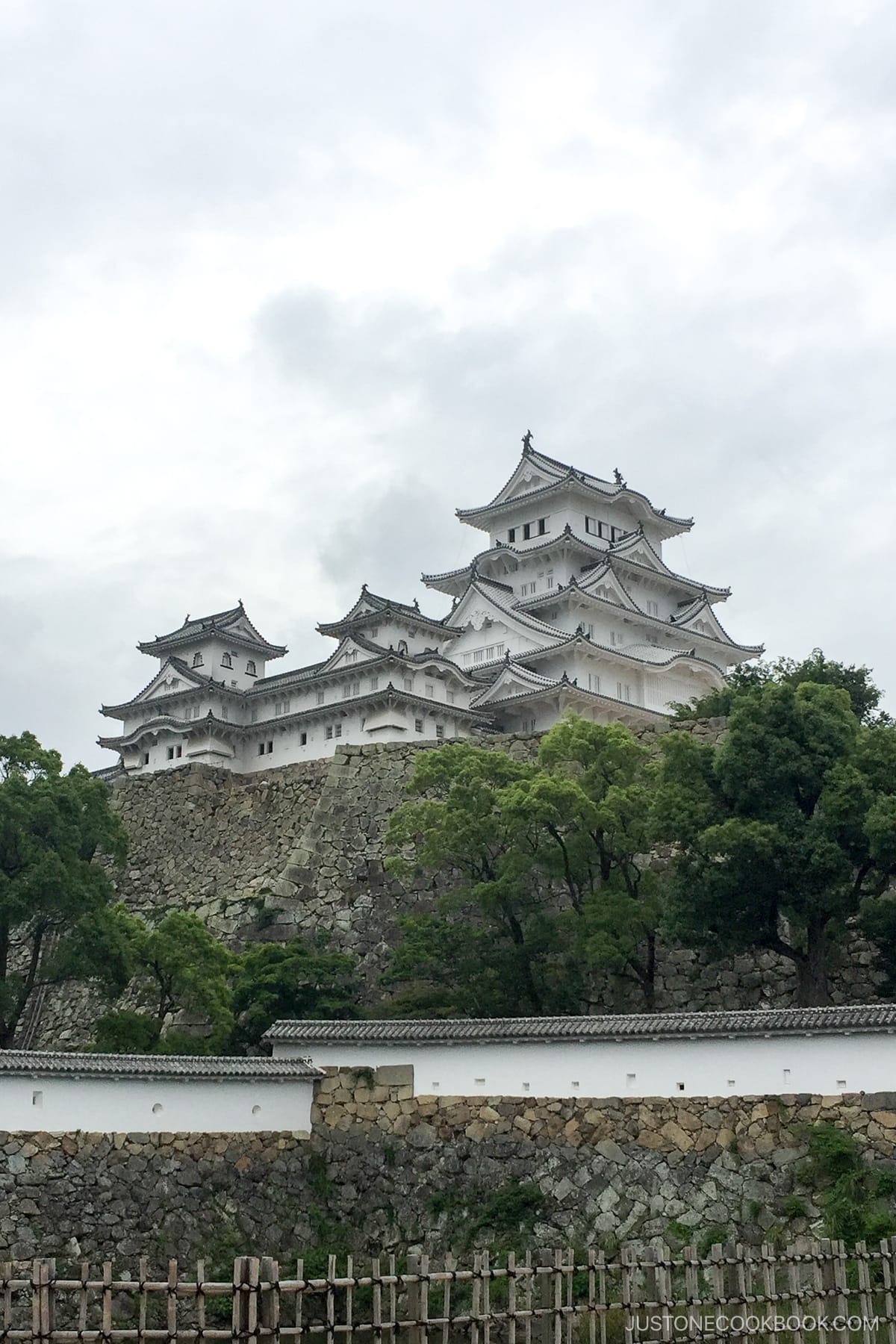

Our family loves visiting Japanese Castles. Each time we visit a new one, we get the opportunity to learn more about each castle’s rich history and fascinating stories. As we look at these awe-inspiring structures, we can only imagine what it was like during the feudal times when the lords and shoguns lived there. Ready to check out Himeji Castle? Let’s go!
Remaining Original Japanese Castles
Almost all of the 200 castles you see in Japan today are replicas. Numerous originals fell victim to fires, war, or earthquakes. Remarkably, only 12 original castles remain standing in Japan to this day and they are:
Of the original castles, the grandest of them all is the Himeji Castle in Hyōgo Prefecture. It is considered one of Japan’s three premiere castles along with Matsumoto Castle and Kumamoto Castle.
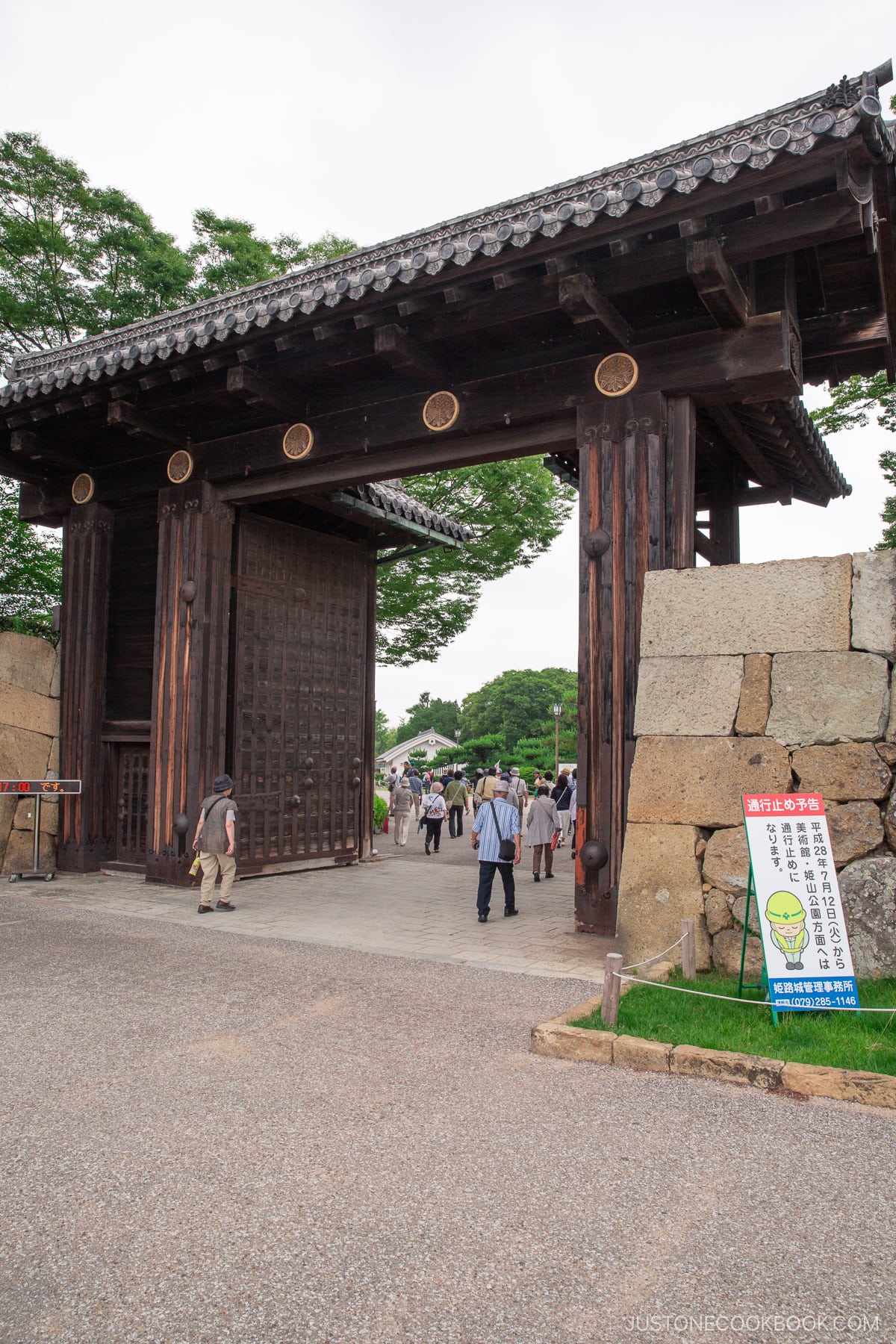

How to get to Himeji Castle
Himeji Castle, located in Himeji City, is easily accessible by either Shinkansen or Shinkaisoku 新快速 (Special Rapid Service Train). If you are already in the Kansai area, you can get to Himeji Station in 40 minutes from Kobe, one hour from Osaka Station using the Shinkaisoku, and one hour and 15 minutes from Kyoto Station. It’s close enough for a day trip if Himeji Castle is on your itinerary. If you take the Shinkansen, Himeji Station is only 30 min from Shin-kobe station.
When you arrive, you can see the majestic castle just down the road from the train station. You can either walk to the castle in about 15 minutes or take the bus. Buses depart every 5-7 min from the train station that will conveniently stop near the castle.
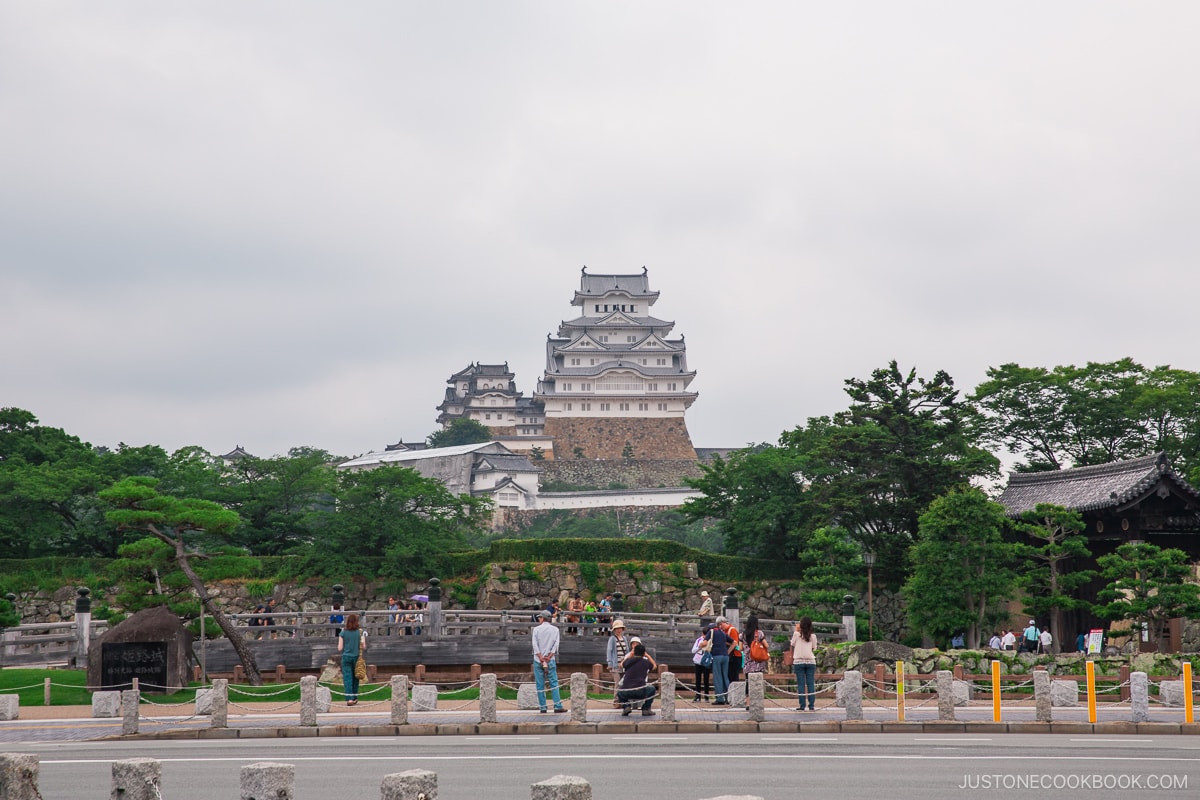

History Of Himeji Castle
Dating back to the early 1600s, the current structure of Himeji Castle underwent extensive renovation and restoration, leading to its reopening to the public in 2015. The site in which Himeji Castle lies dates back to 1333 when it served as a seat of power for rulers.
Besides being the largest and most visited castle, it is also one of the first Japanese UNESCO World Heritage Sites. It is also an example of traditional Japanese castle architecture and contains many advanced defensive systems and features from the Feudal Period (1185-1603).
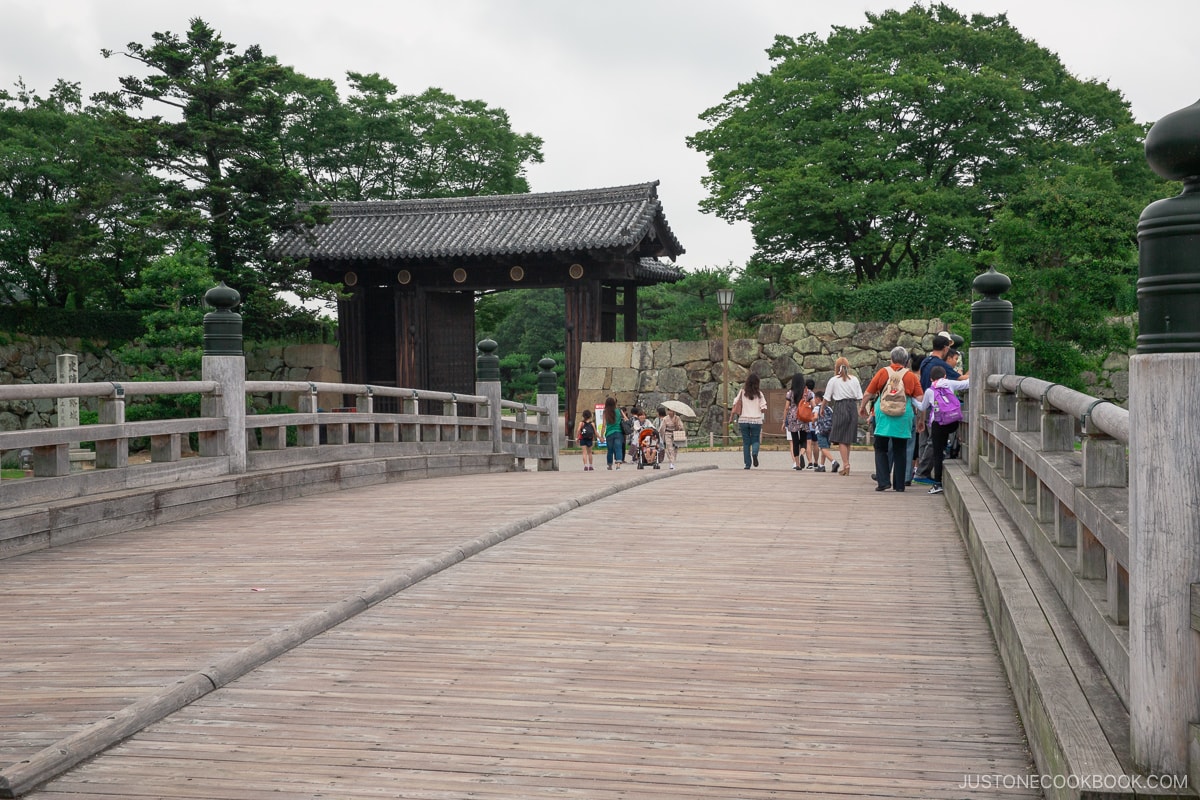

As you cross Sakuramon Bridge (桜門橋) through Otemon Gate (大手門), you can enjoy walking around the castle grounds at no cost.
Himeji Castle Nickname
Himeji Castle is also known as Shirasagijo (白鷺城) “White Heron Castle” due to its white exterior and resemblance to a bird flying. Its elegant appearance and grand stature attract millions of visitors every year, with the peak season being during cherry blossom season. From late March to mid-April, over 1,000 ephemeral cherry blossom trees surround the castle complex, in a tapestry of pink and white, creating a magical-esque scene.
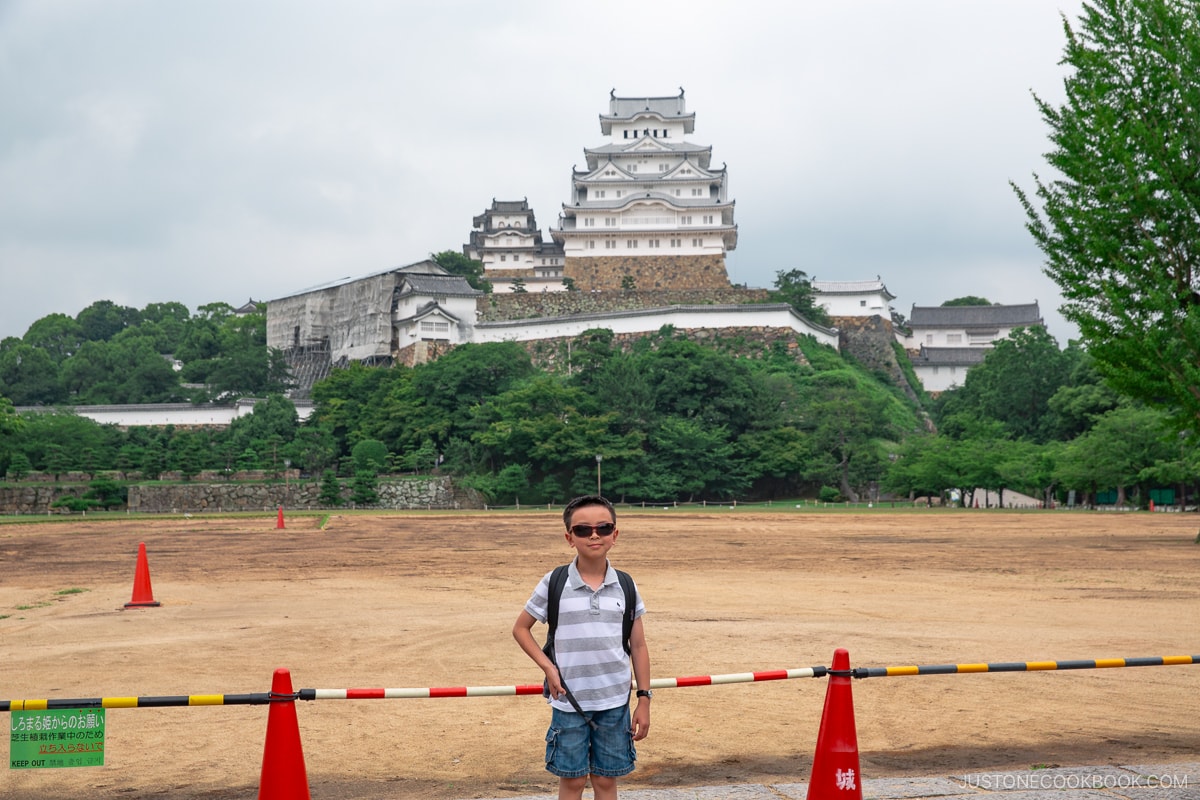

Tour of Himeji Castle
Before entering Himeji Castle, you will need to purchase tickets from the vending machines. Entrance fees are ¥1,000 for adults and ¥300 for all school children (prices in 2024).
Himeji Castle is built on a hilltop (Himeyama) so there is quite a bit of climbing as the castle’s stairs are quite steep – A word of caution to those who might have trouble climbing or walking for long periods.
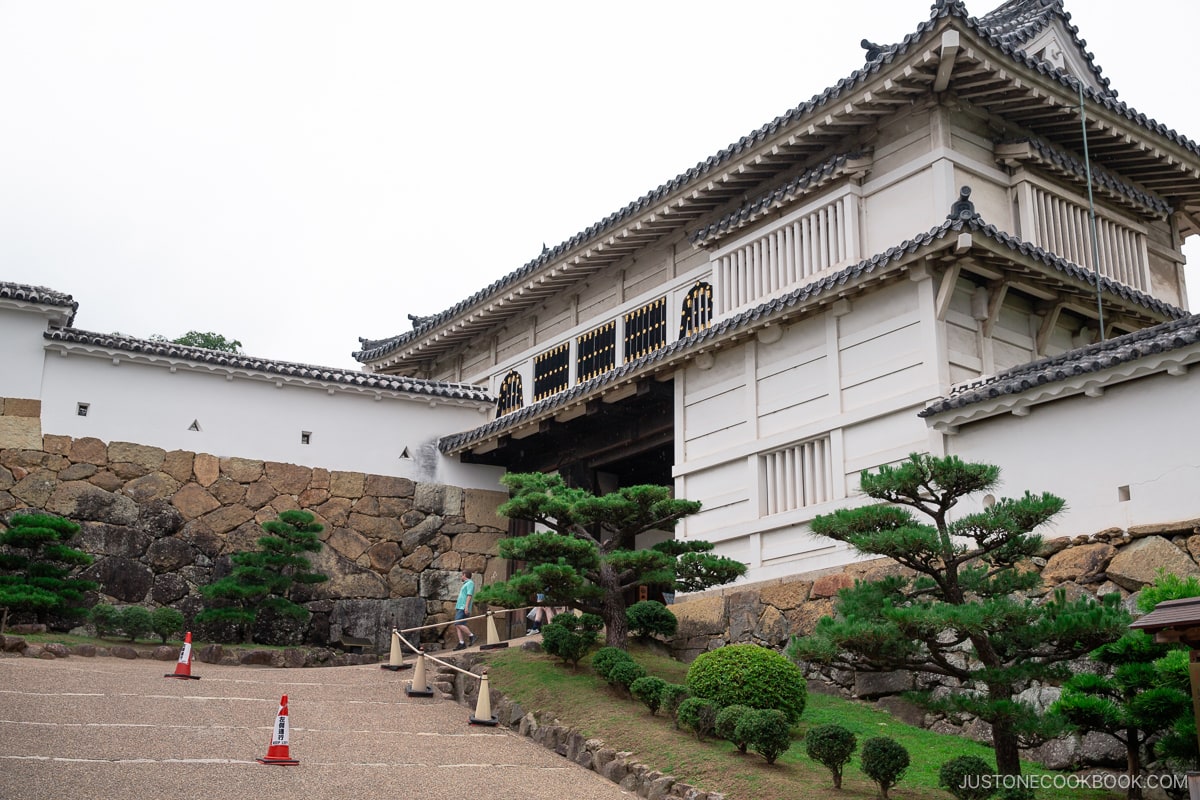

The paths and walkways up to the castle are intentionally designed like a maze, intended to confuse the enemy during attacks. In addition to the complexity, these paths are very narrow and steep, making them even harder to attack.
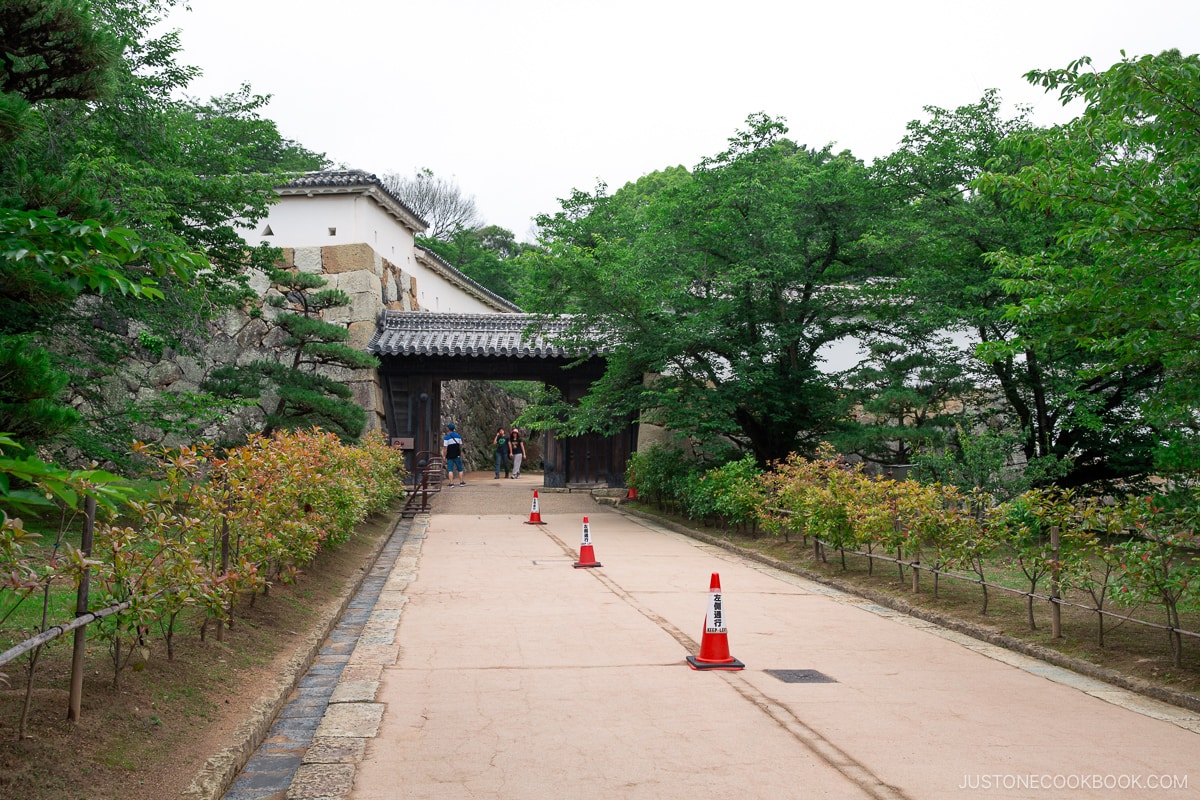

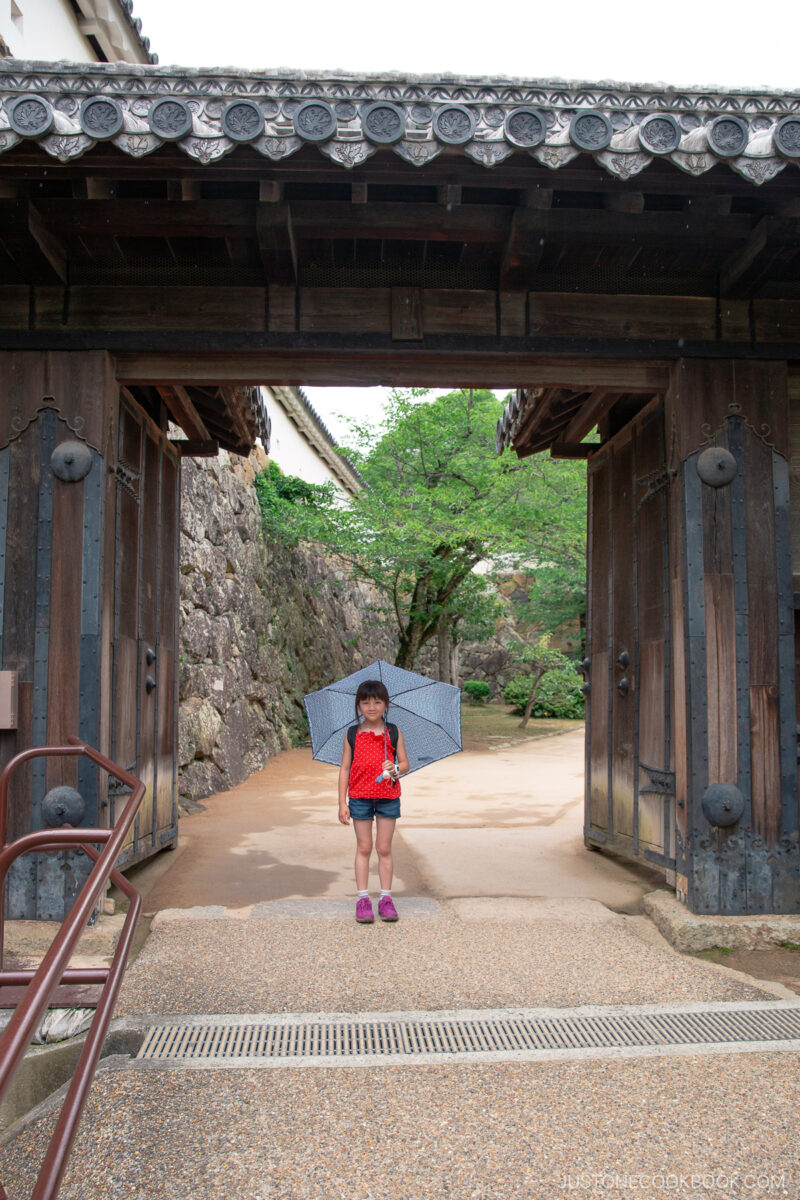

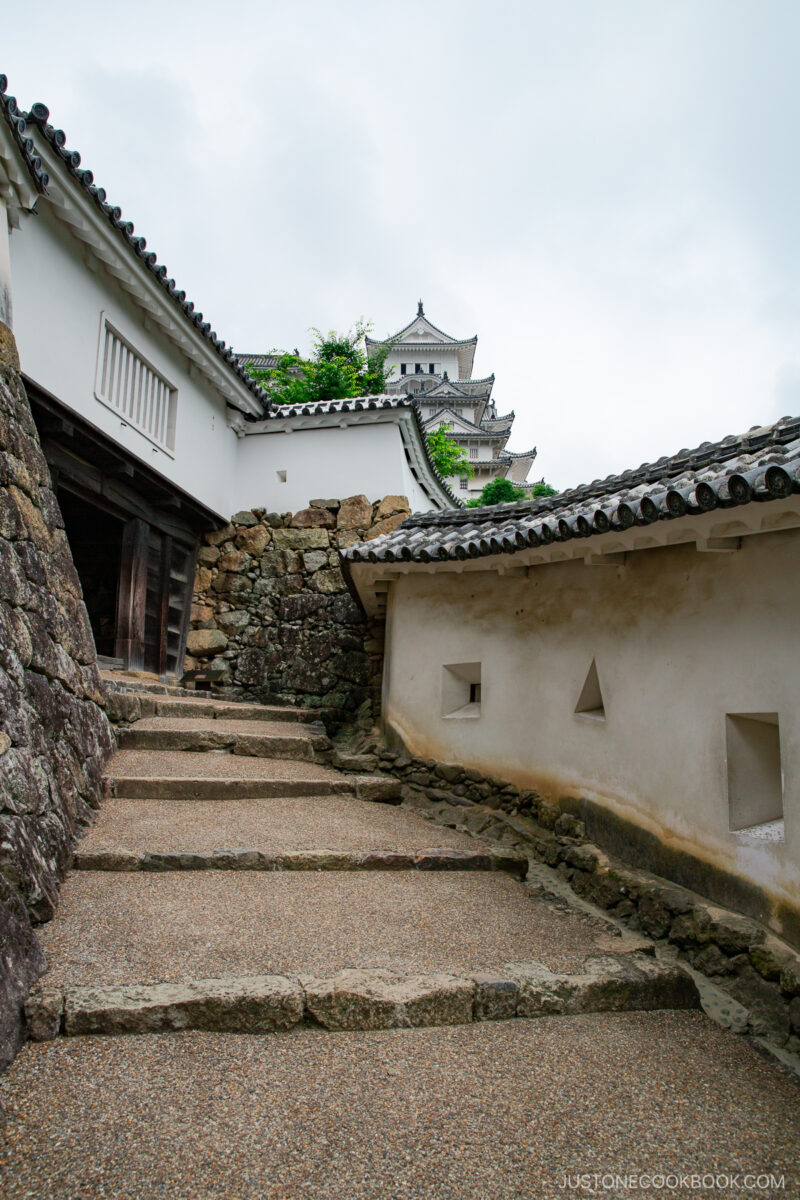

As you can see in the photo below, many gates leading to Himeji Castle Tower are tiny. It would be difficult for more than a few adults (or an army) to enter quickly, enhancing the castle’s defensibility.
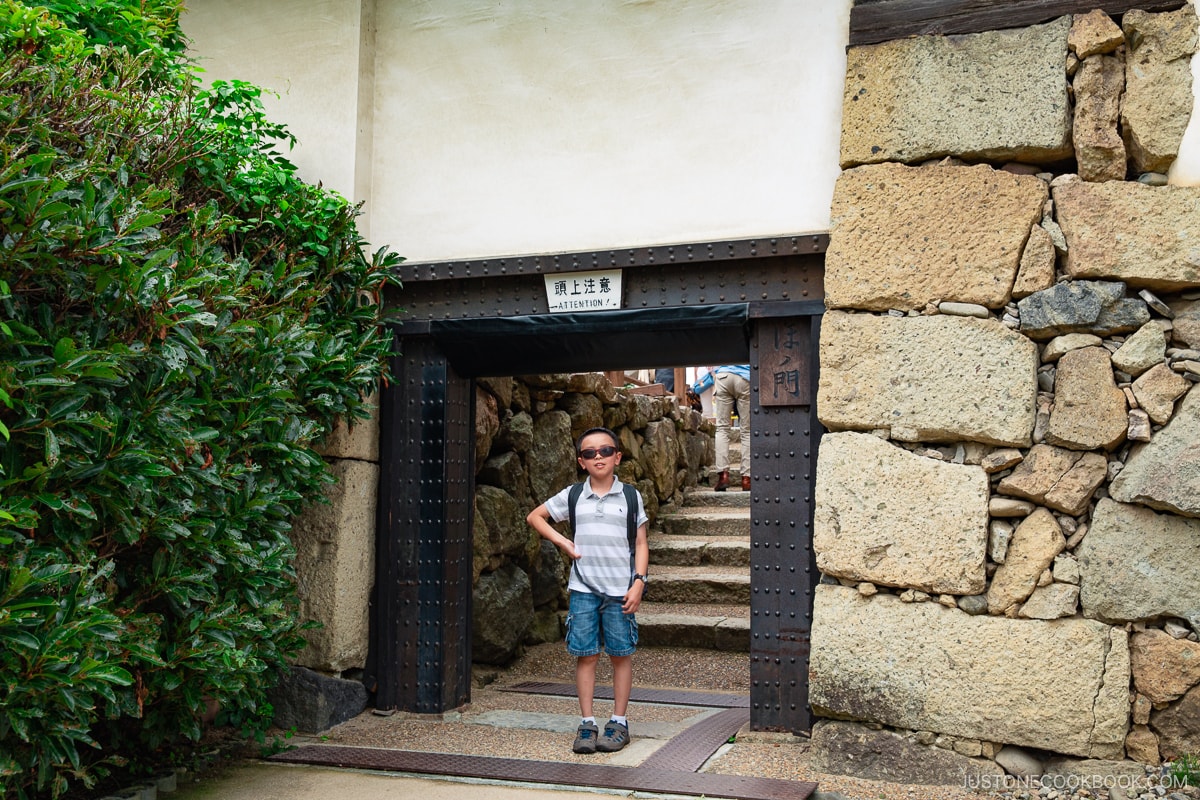

The various gates act as barriers and the high stone walls make it difficult for any potential invader to pass through before reaching the main keep.
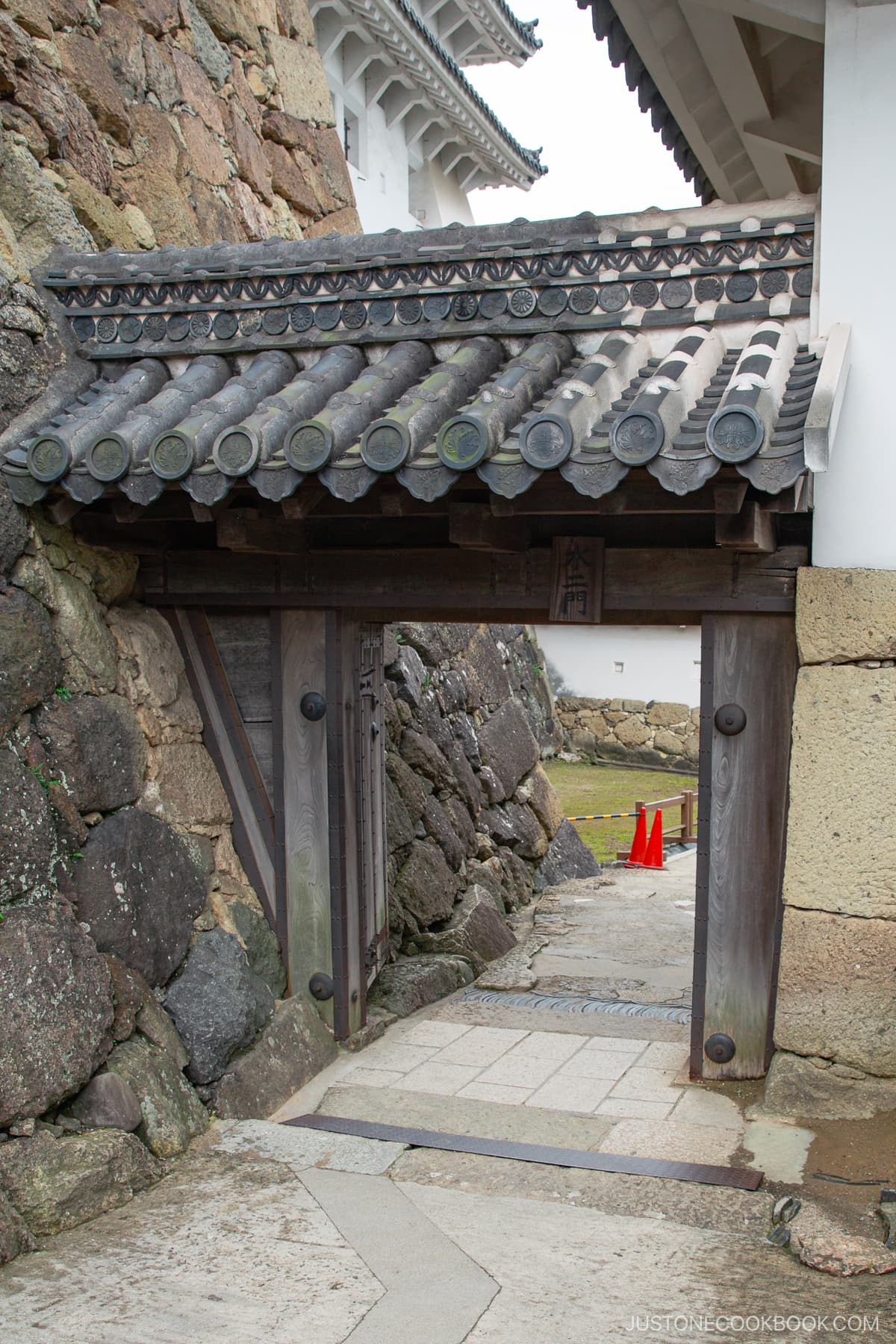

Throughout the tour, plaques explain the purposes of specific architectural characteristics. In this example, it explains the history of the Oil Wall.
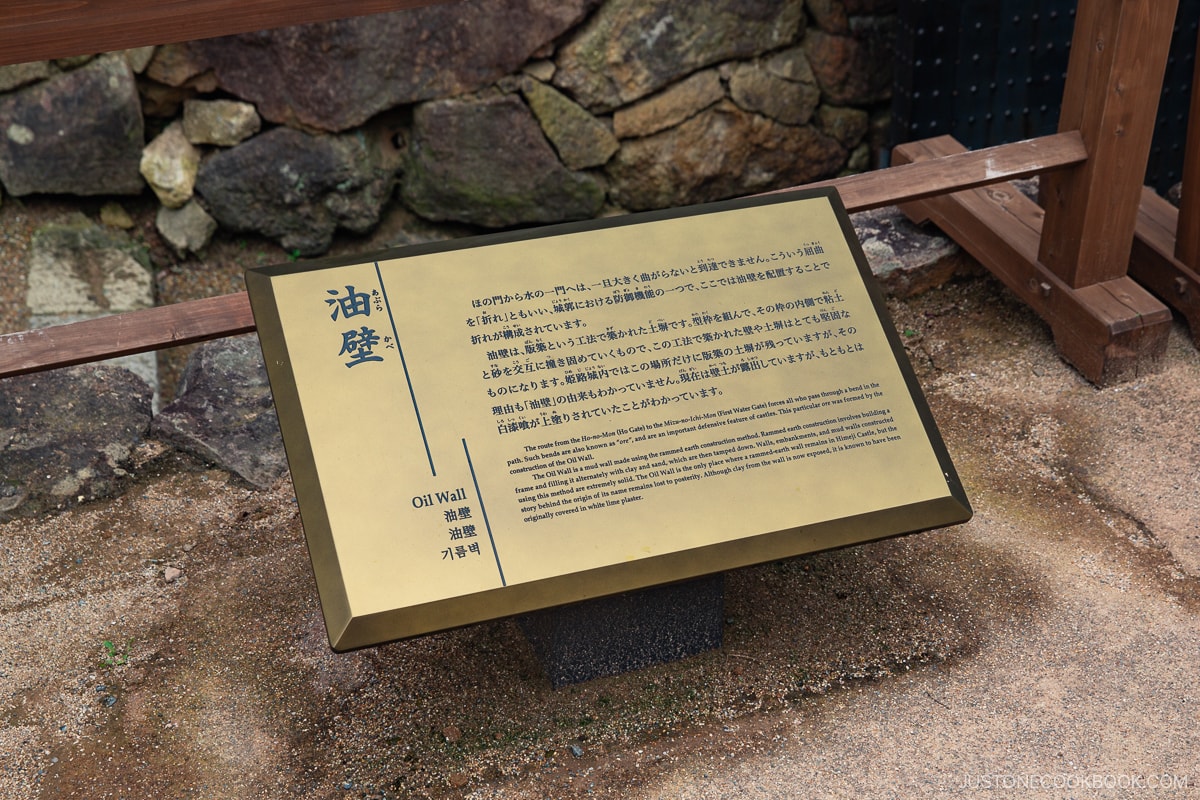

The oil wall is a mud wall made using a rammed-earth construction method, resulting in very strong walls. This particular wall is the only rammed-earth wall remaining at the castle and was originally covered in white lime plaster.
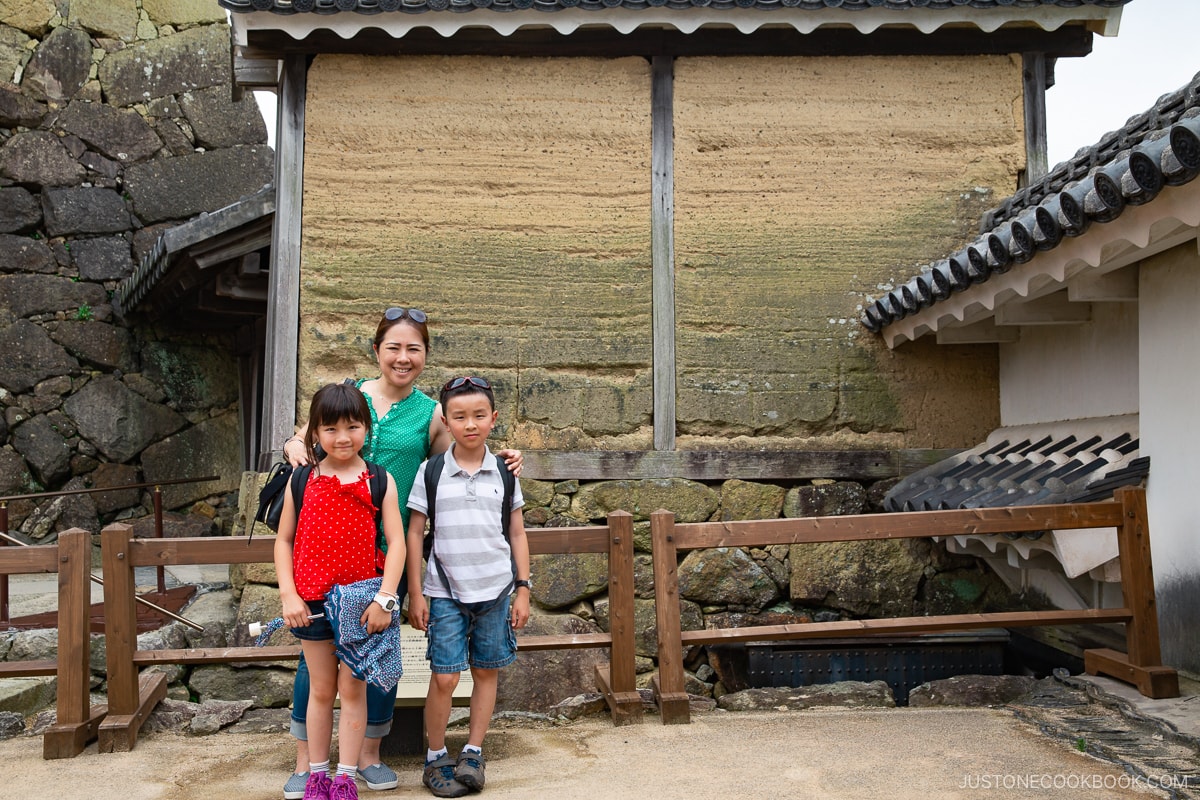

The Himeji Castle Tower
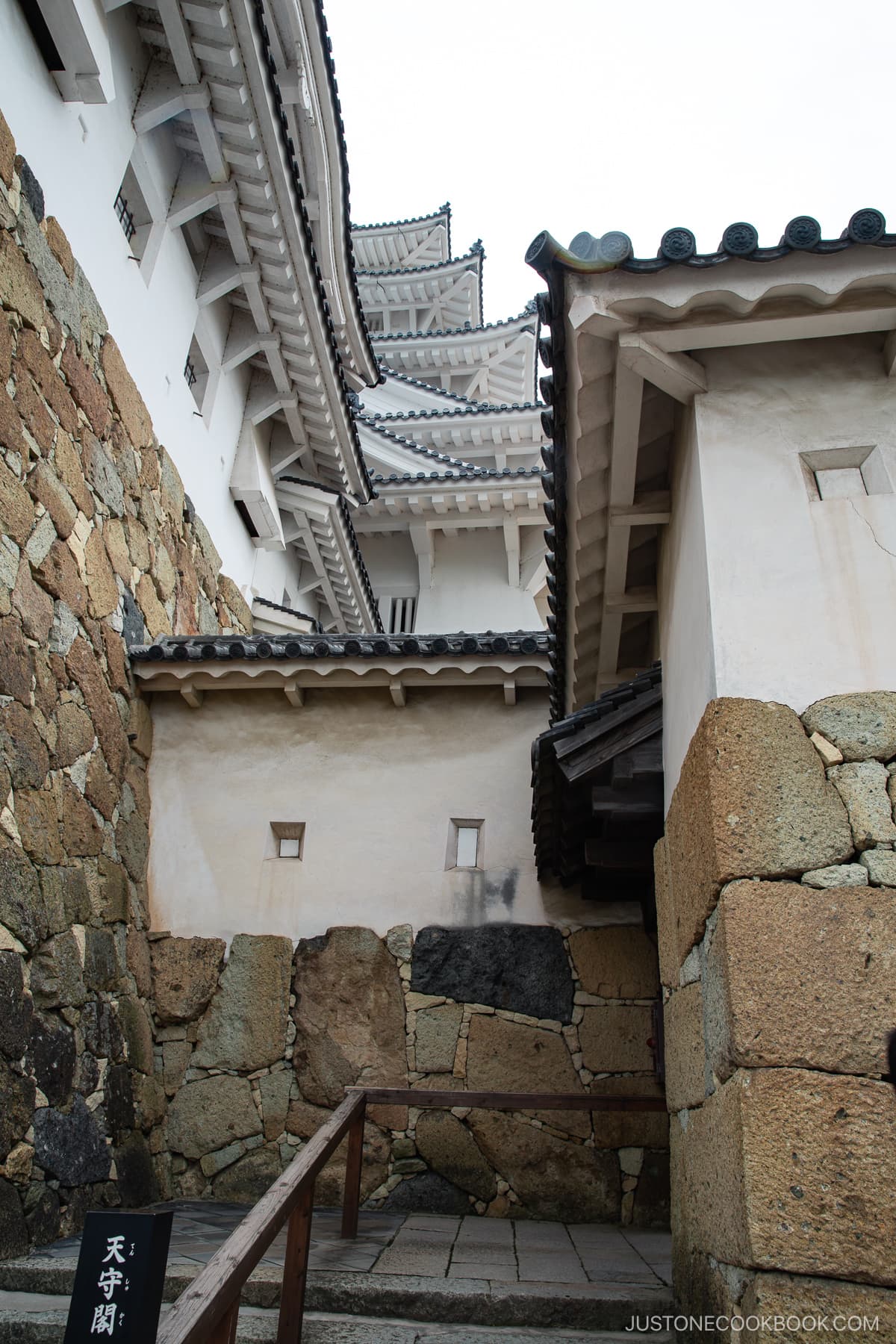

After entering the main keep, there is a model depicting the Himeji Castle and the surrounding area during the feudal days on the first floor.
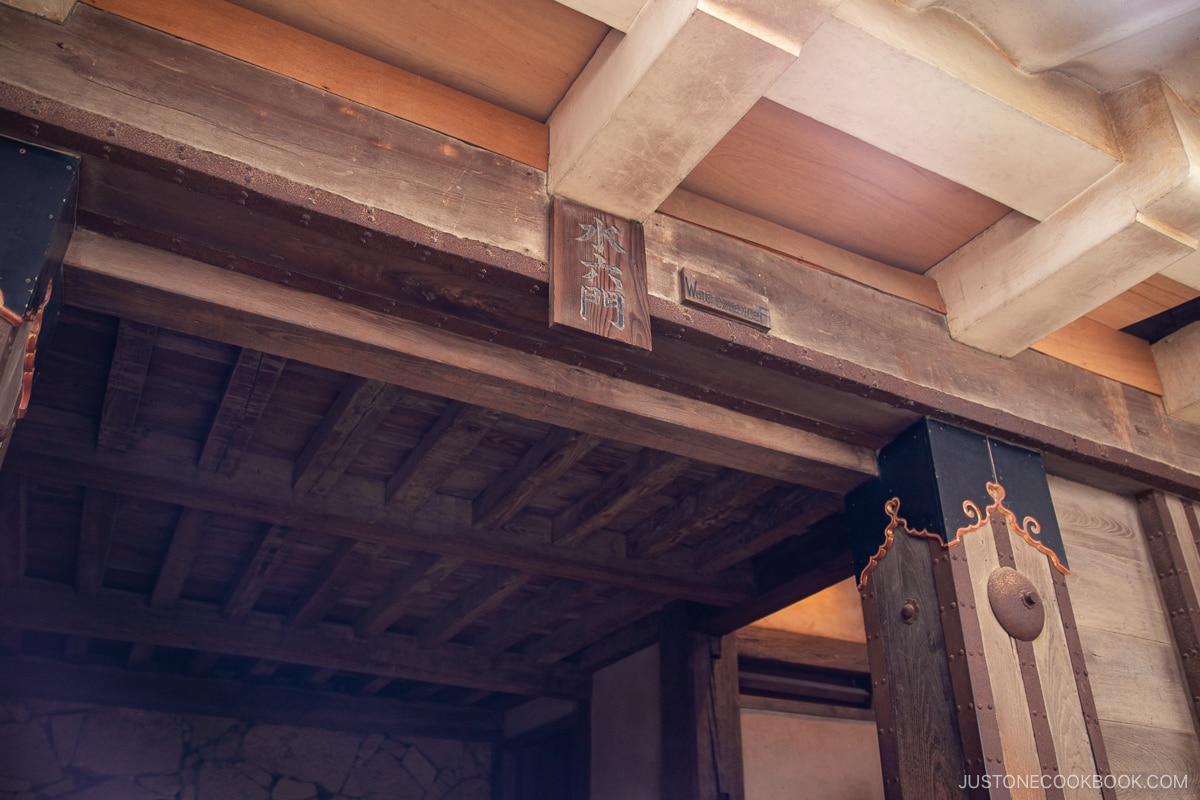

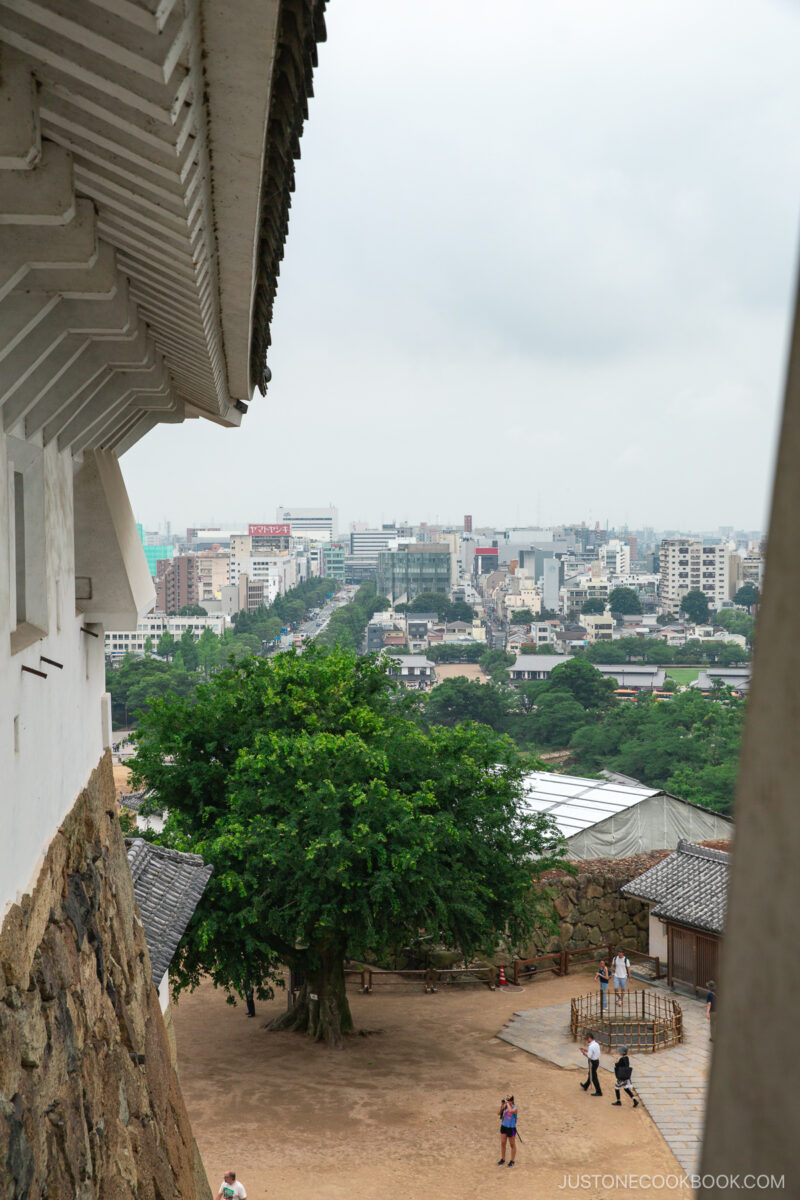

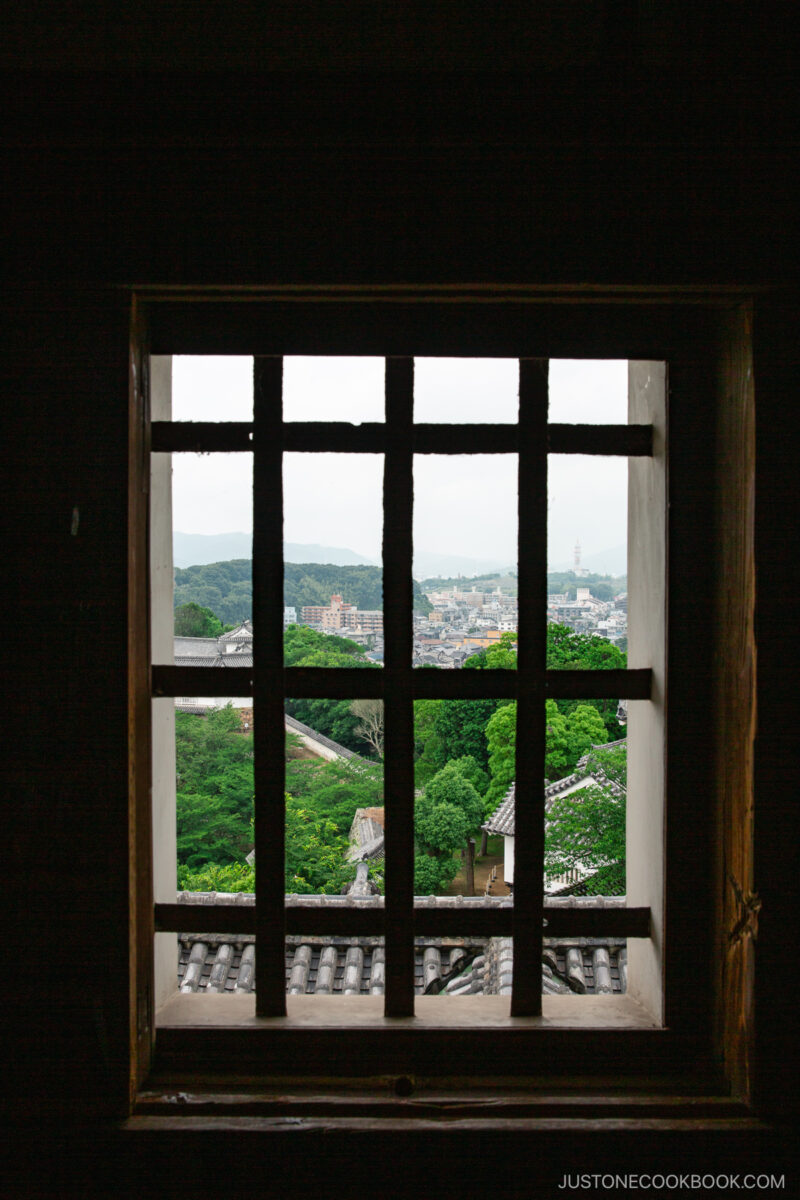



Visitors can learn about the history of the castle and the extensive repairs done over the years. Before 2009, the previous major restoration was completed in 1964. The more recent restoration focused on the replacement of roof tiles and walls of the main keep.
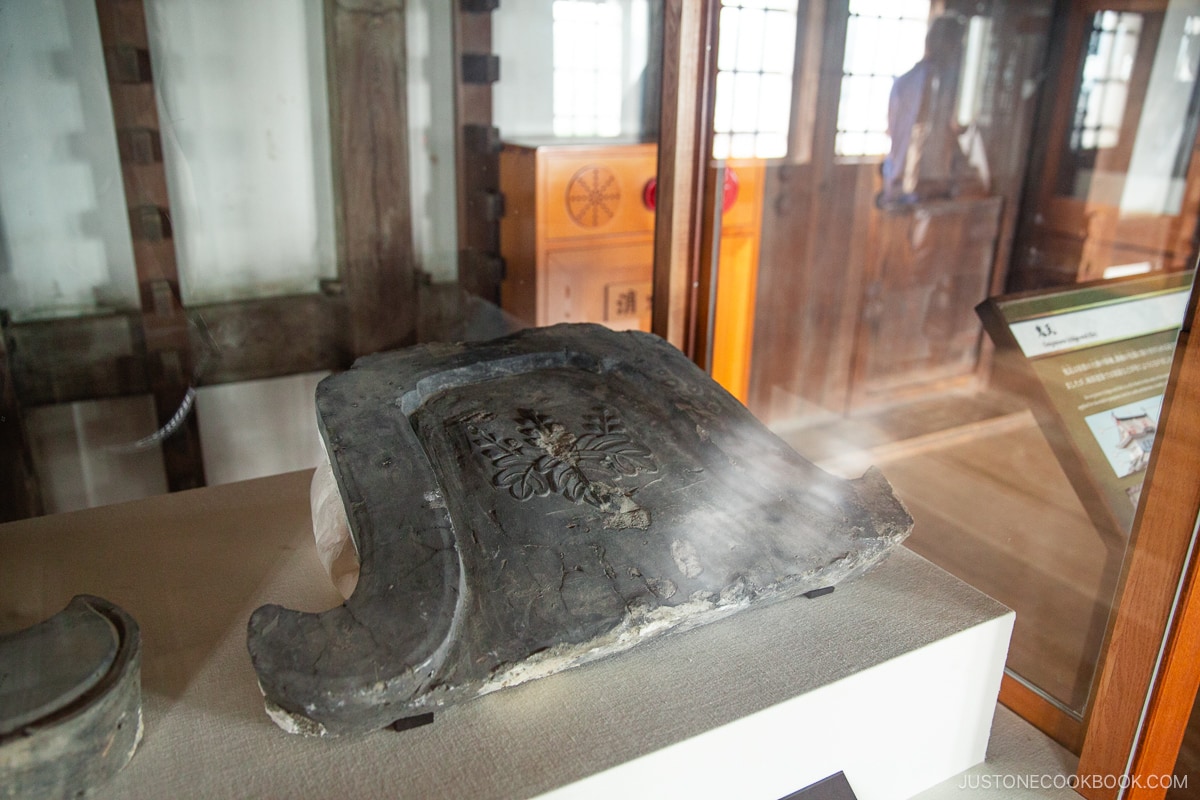

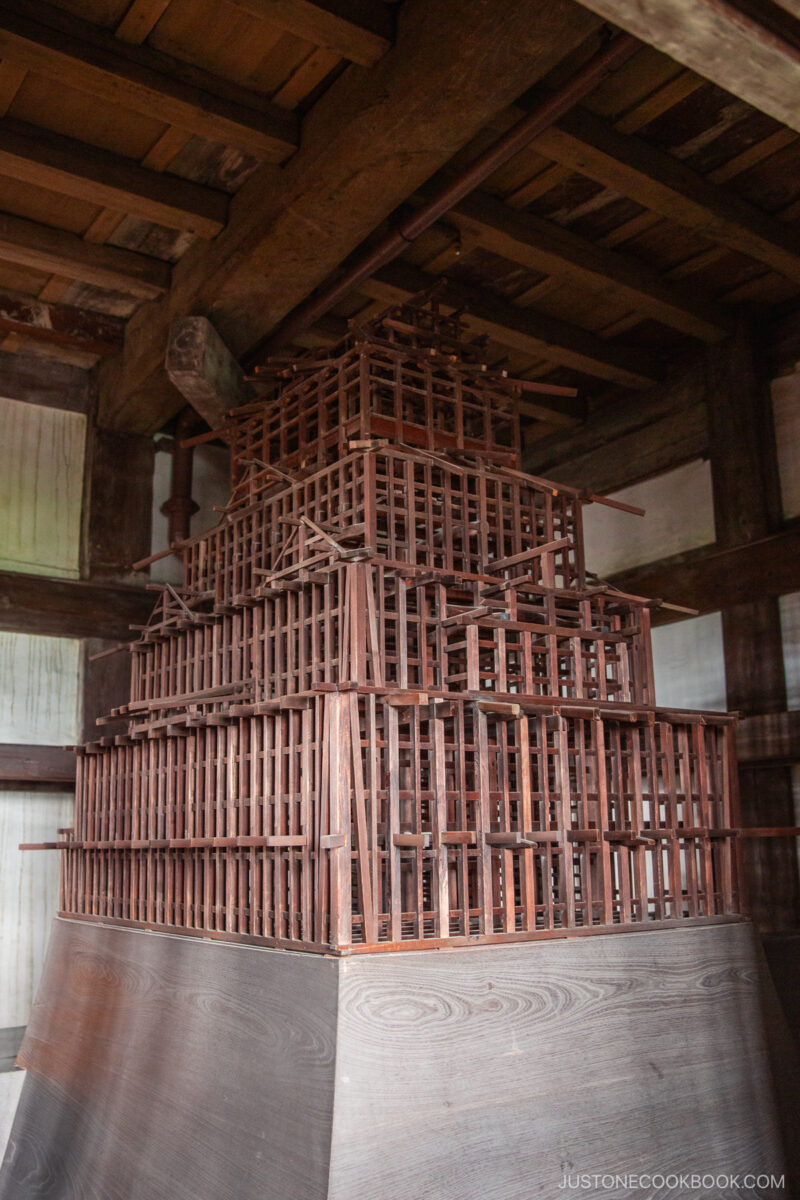

Other displays include a model of the wooden skeleton that supports the castle, demonstrating its resilience against various natural disasters, including the Great Hanshin Earthquake.
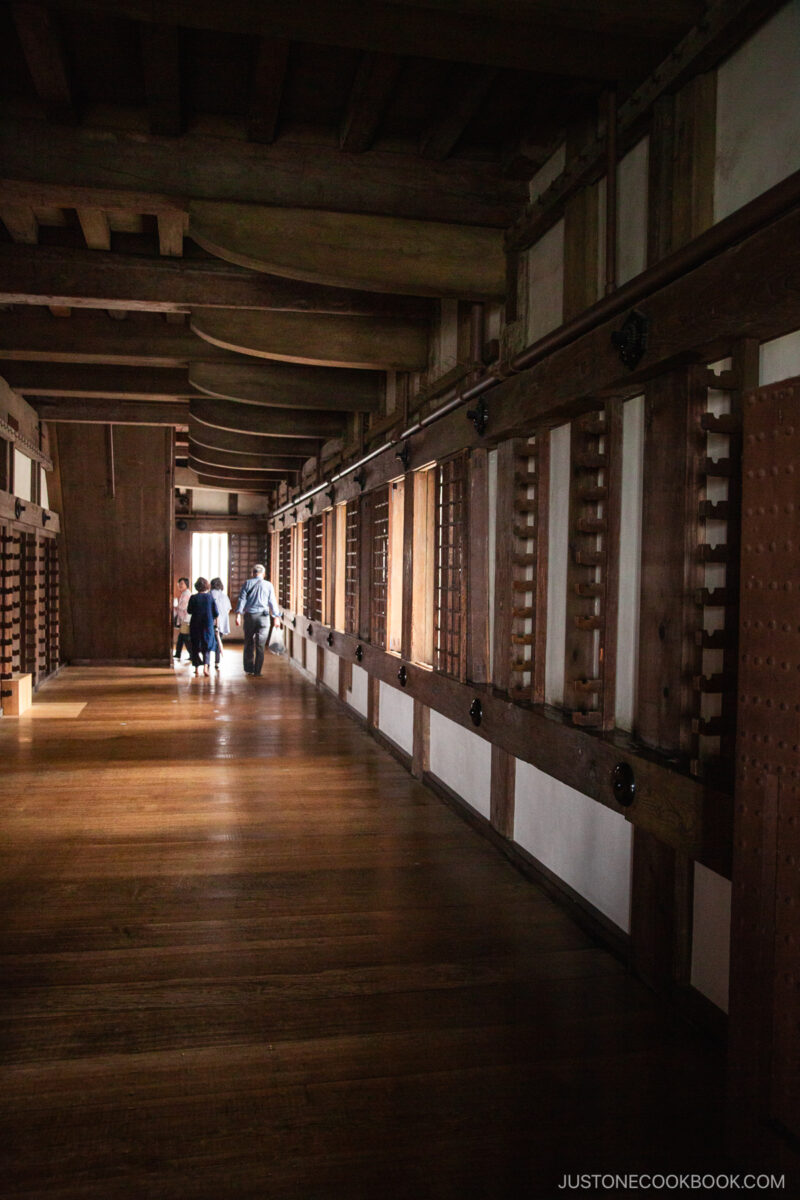

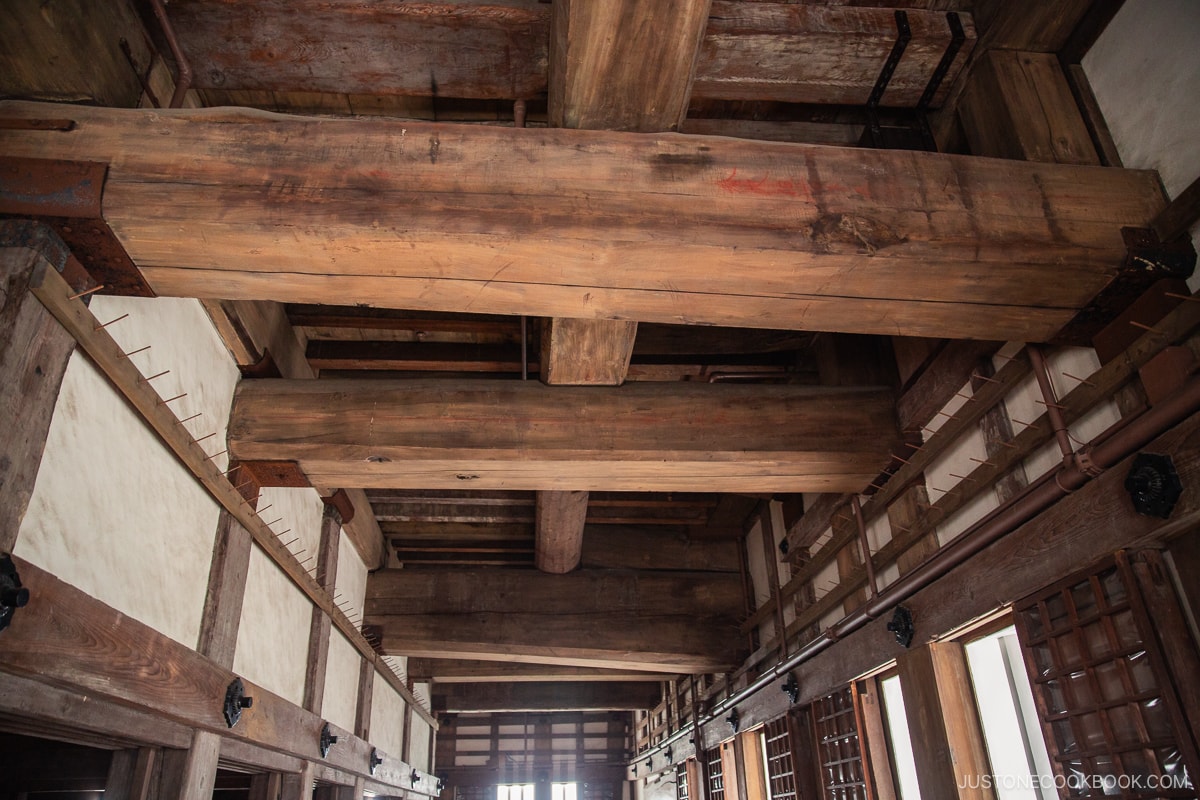

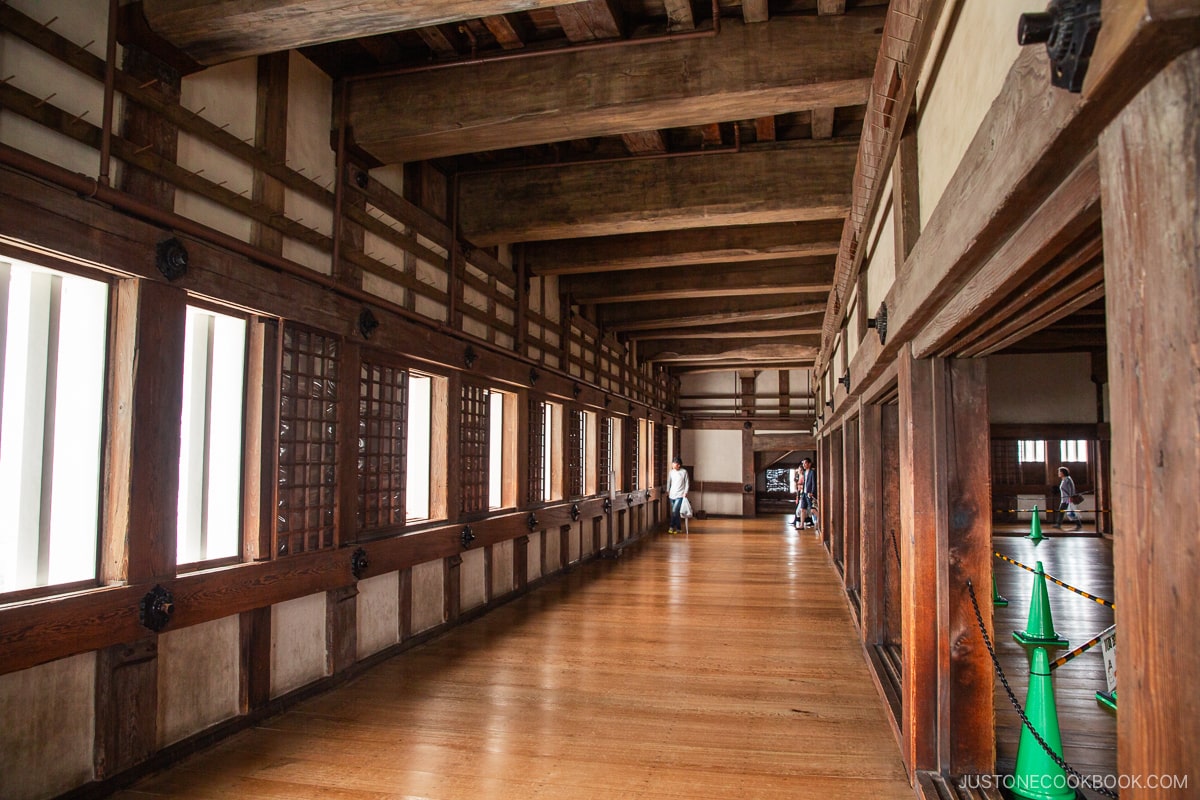

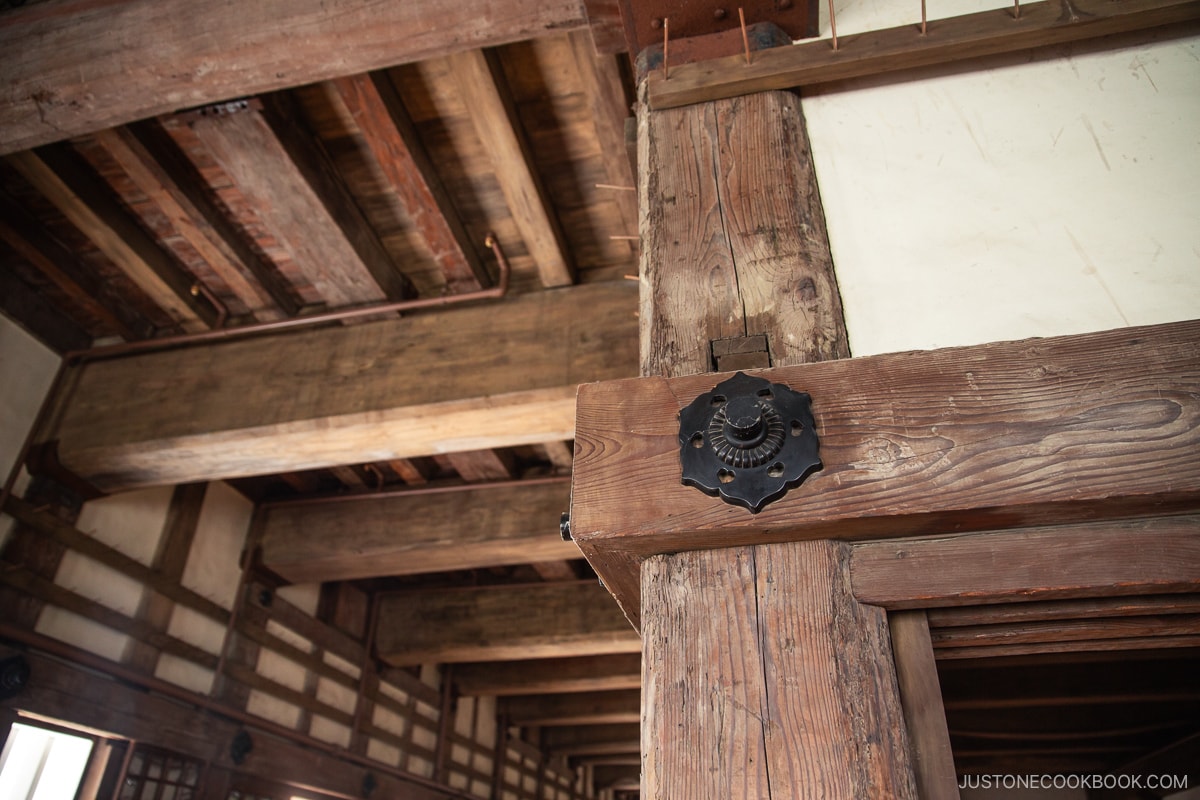

Besides the first floor, there aren’t too many artifacts or castle information on display on the other floors. Visitors are guided through each of the floors through barriers. As a word of caution, there is no restroom inside the actual castle so remember to go before entering; otherwise it’s a long way down.
As visitors tour each floor, there is a lighted floor plan on display and a brief explanation of the special features on that floor.
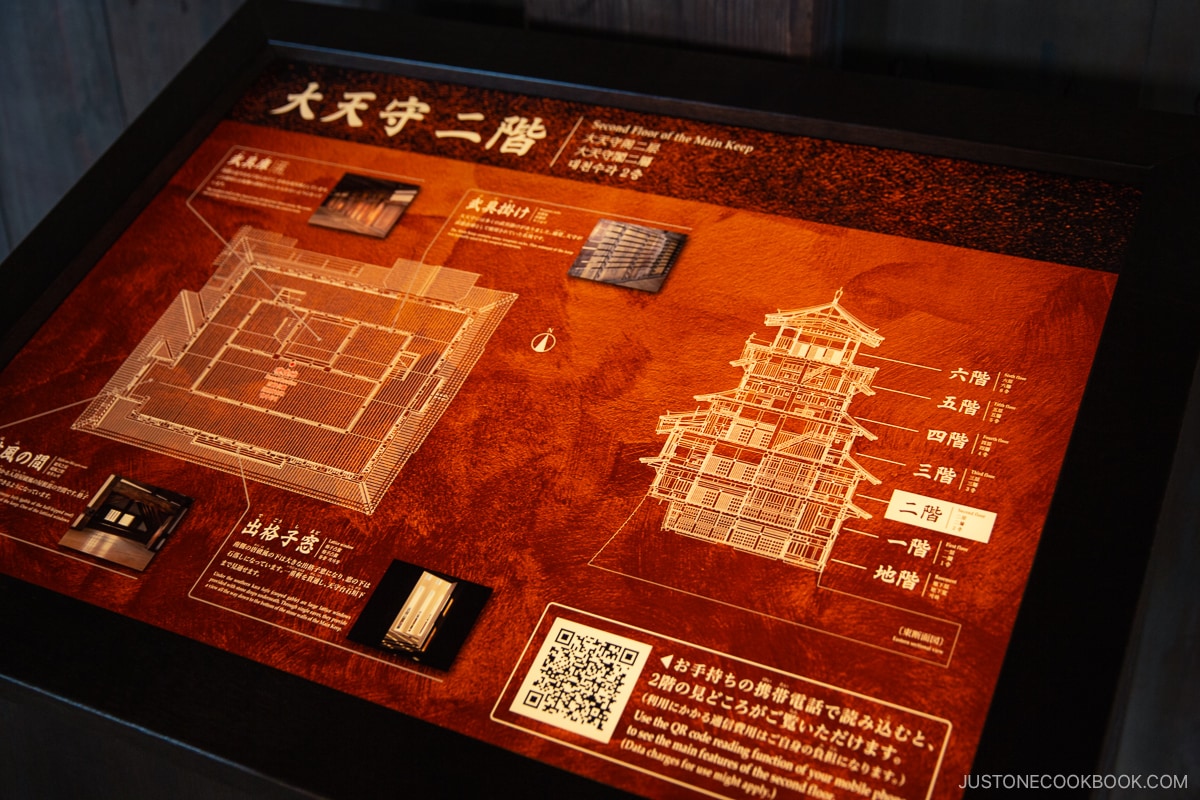

One of the interesting architectural features that stood out to us were the two massive pillars that support the castle, one on the east and another on the west.
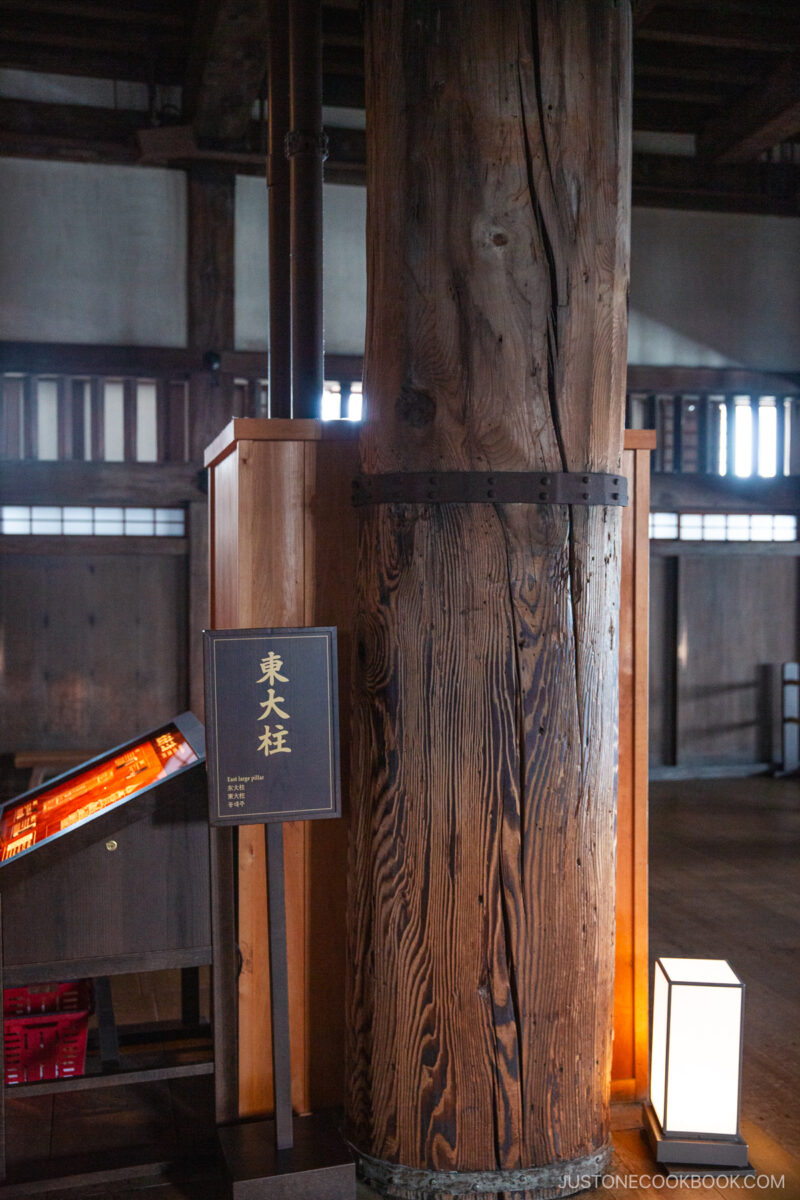

Each floor gets progressively smaller as you go higher up. Even though the castle looks like it’s 5 stories from the exterior, it’s actually 6 stories and has a basement floor.
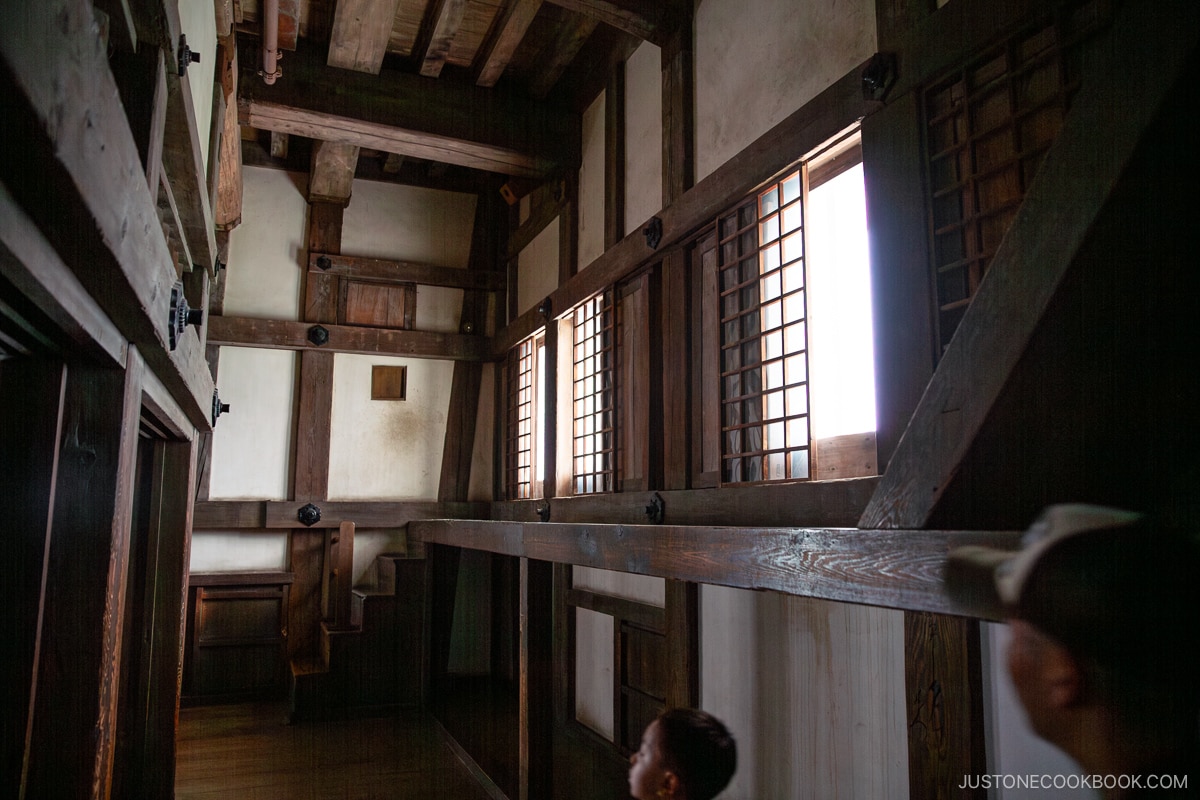

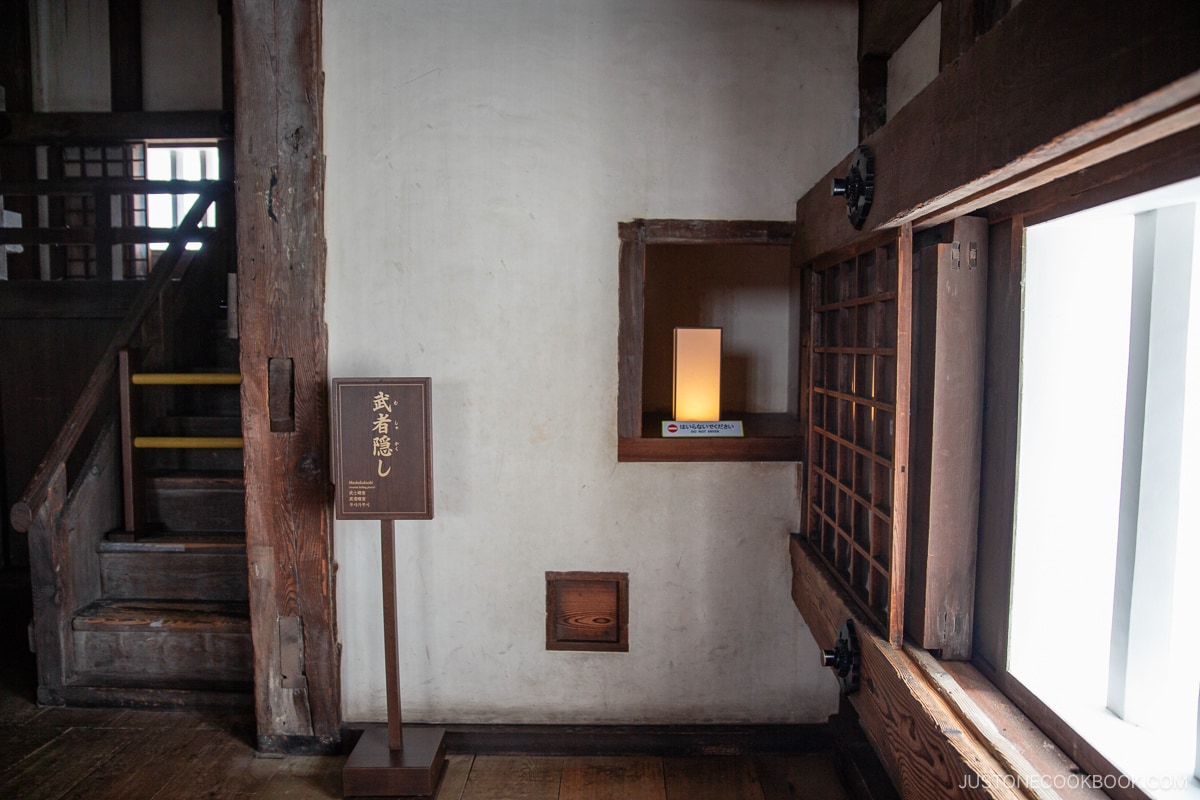

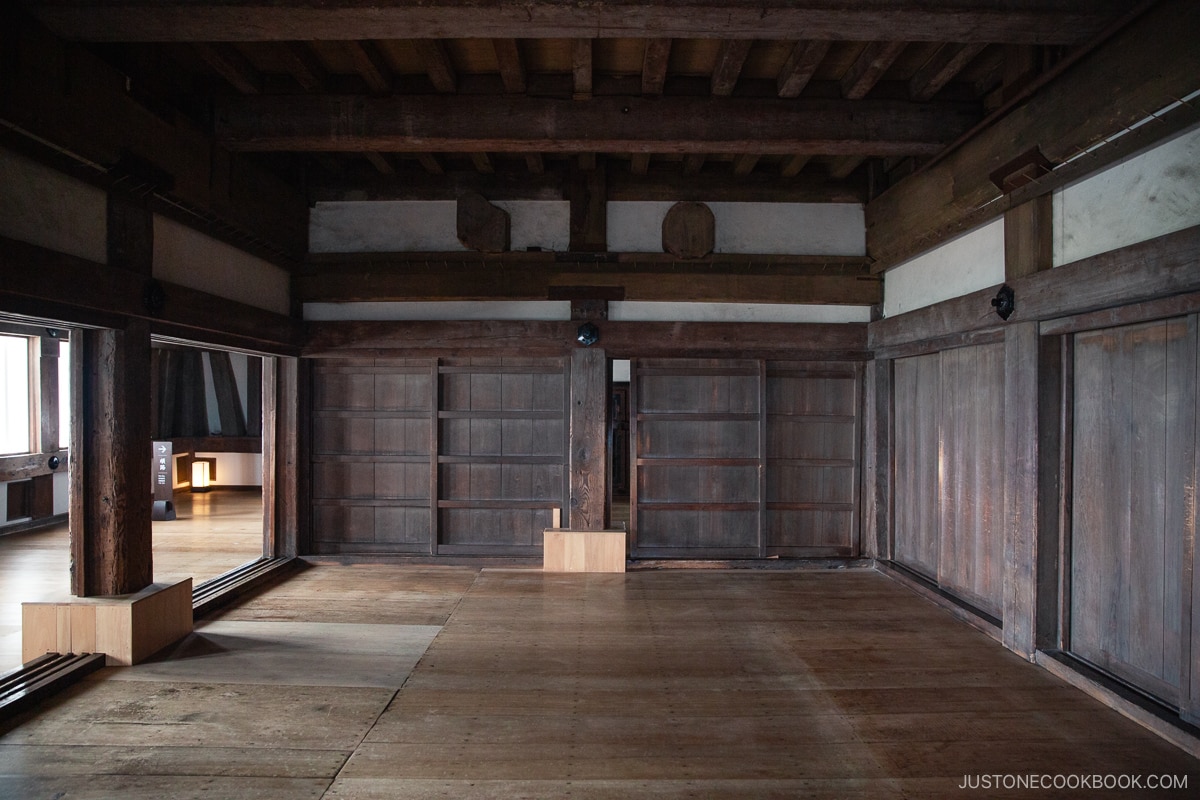

After touring the castle towers, we walked around the castle grounds. One of the interesting features was the Okiku Ido well.
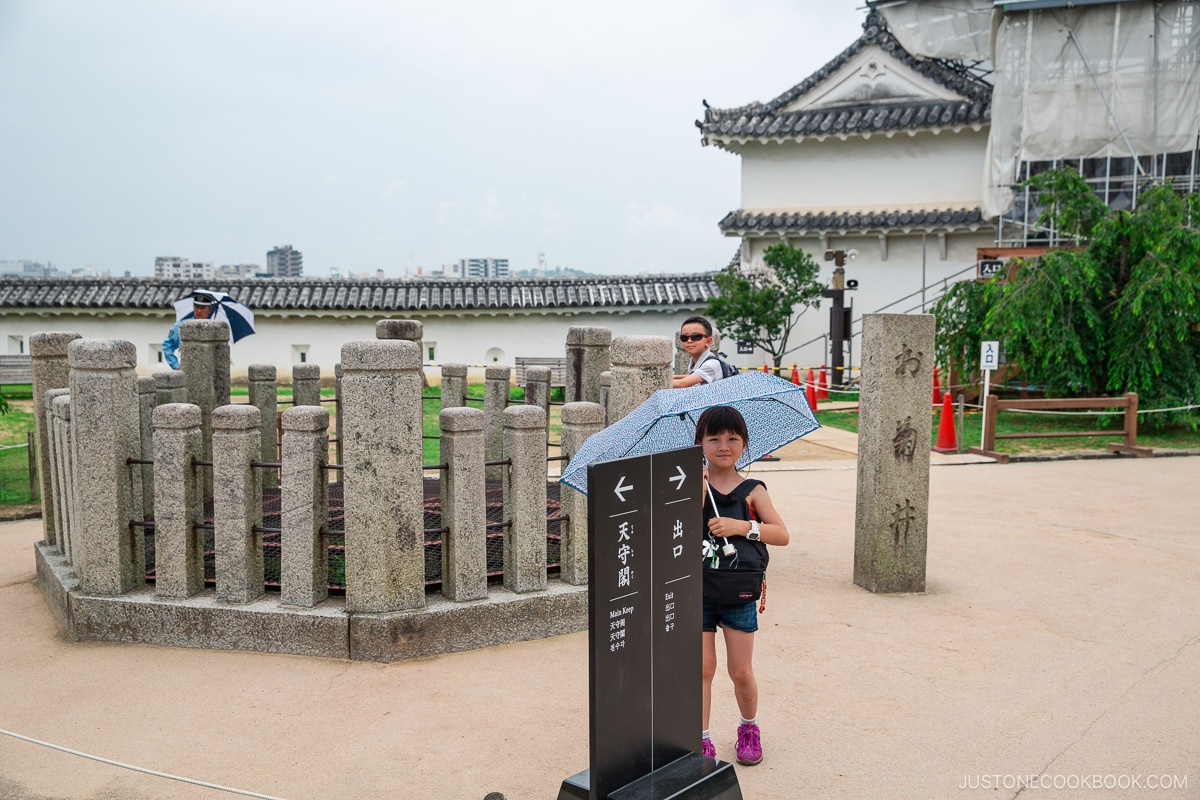

It has been there since the 1500s, and there’s a story of murder and betrayal connected to it. If you are interested in the story, read more here.
Local Specialty Food at Himeji: Sea Eel Sashimi


What is this sea creature you might ask? Before visiting Himeji Castle, we quickly grabbed a bite at the train station. At most large train stations in Japan, you can find all sorts of restaurants and shops nearby. We visited a seafood shop that had live sea eel (anago 穴子), a local specialty we had never experienced before.
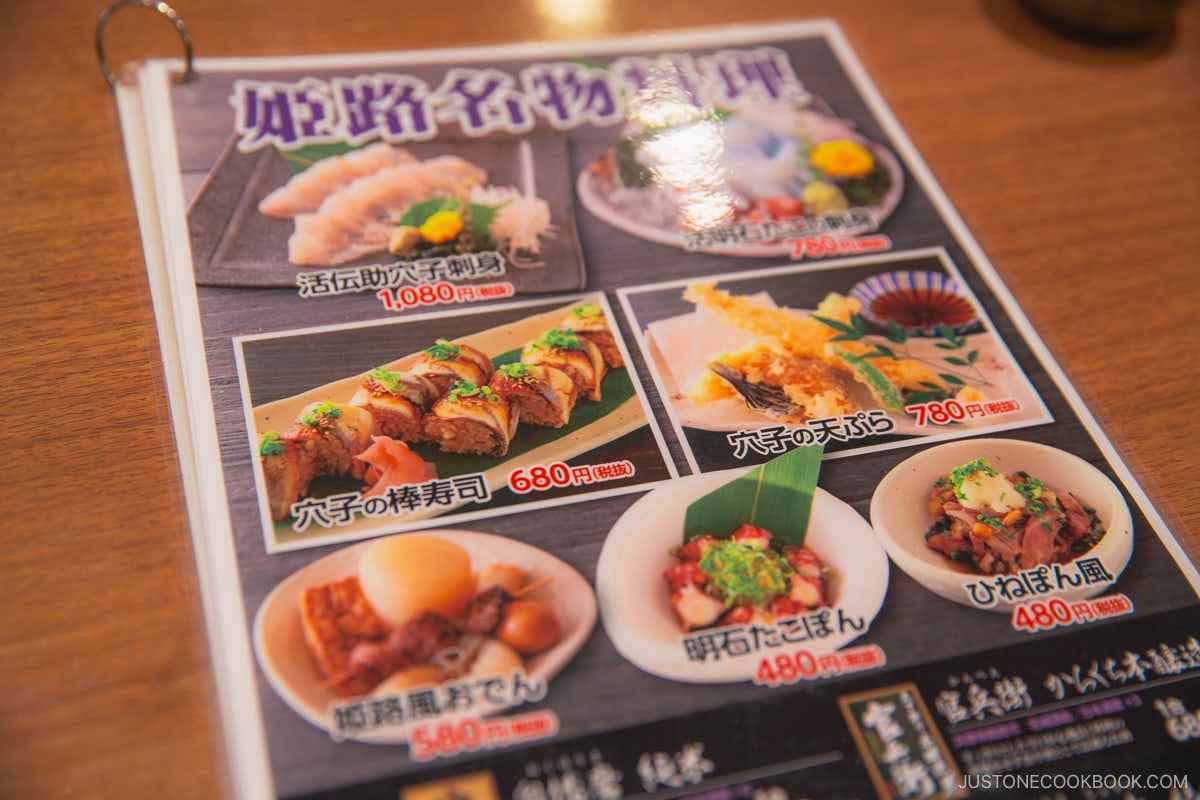

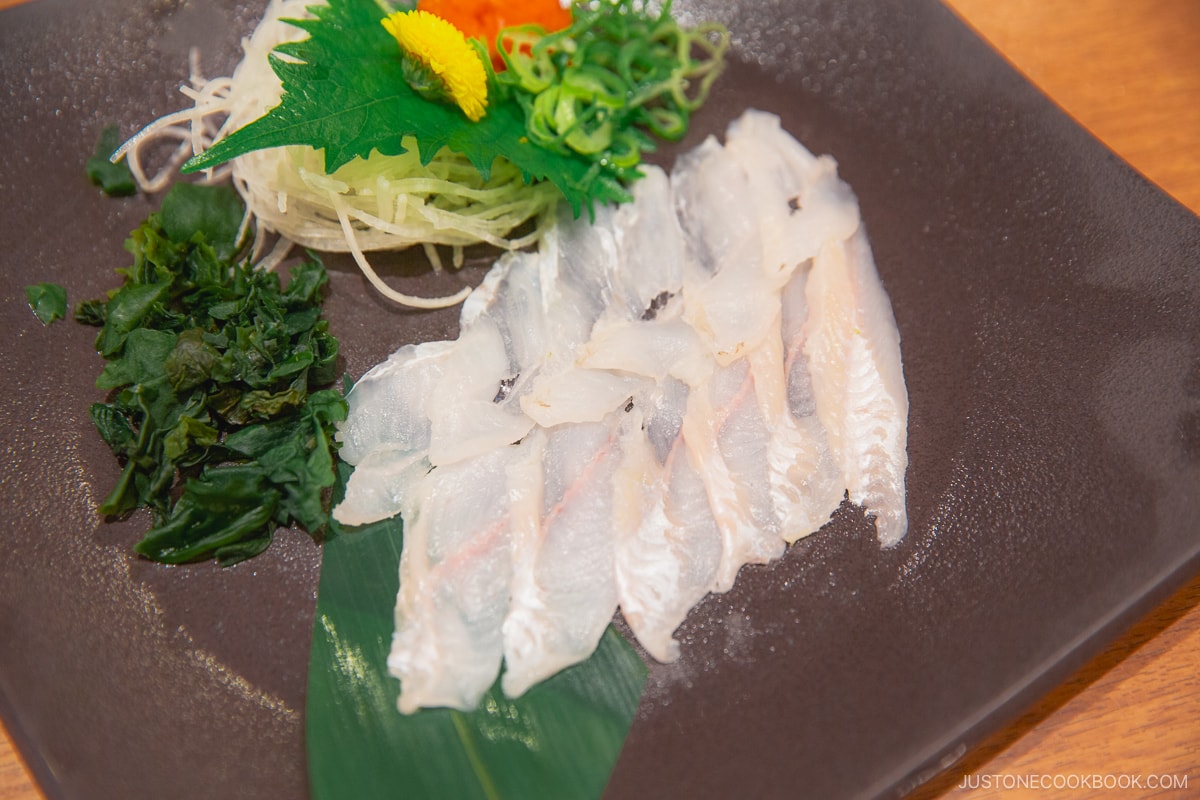

The anago sashimi (I did say fresh!) is thinly sliced into uzusukuri (薄造り) and its texture and flavor are similar to hirame (halibut/flounder). It was accompanied by ponzu and it was quite delicious; however, there were a lot of small bones we had to pull out.
I hope you enjoyed this quick tour of Himeji Castle. If you haven’t visited an original Japanese Castle, we highly recommend Himeji Castle, Matsumoto Castle, and Matsuyama Castle to your future Japan trip.



